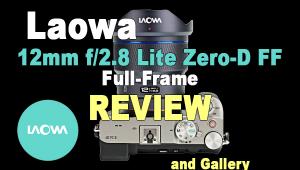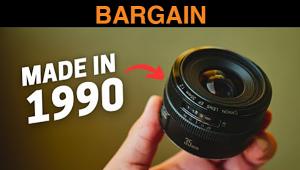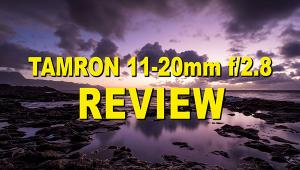Medium Format Lensbabies; Blur & Distortion Go Big!
At PMA 2007 Lensbabies introduced the medium format version of its third-generation selective focus lens for Mamiya 645 and Pentax 67 cameras. That's right kiddies, it's a new lens that's engineered for use with medium format film (remember that stuff?) cameras.
The optic in the Medium Format Lensbaby 3G produces the same effects as the optic in the Ed Wood-styled Lensbaby 3G for SLR cameras except that it's optimized for the specific camera body. The Lensbaby 3G for the Mamiya 645 features an 80mm fixed focal length and aperture settings from f/3.4 to f/39, although changing them requires a special tool (it's included) and not the familiar "let's rotate the aperture ring" procedure. The Lensbaby 3G for Pentax 67 cameras has a 100mm fixed focal length and has apertures from f/4 to f/45. Both the Mamiya and Pentax versions use magnetic apertures marked with the f/number that's especially useful for cameras without in camera metering. After all, a Lensbaby does not electronically communicate with the camera body.
 |
Previous babies had you shift the in-focus area by bending the flexible lens tube in any direction. But you had to hold it there. The Lensbaby 3G medium format lens, like the latest one for 35mm and digital SLRs, allows photographers to lock the Lensbaby in a desired position by simply pressing a button to place the "sweet spot"--a term the babies just love--of sharp focus. Then, using a traditional barrel focus mechanism you can fine-tune focusing before pressing the shutter release. The upside of all the added mechanical complexity is repeatability. Studio photographers who need to be able to repeat Lensbaby-style photos can get it exactly right each time. Not only that, outdoor and nature photographers can shoot longer exposures than possible with the Original Lensbaby or Lensbaby 2.0.
 |
In The Field
Shooting with the Medium Format Lensbabies takes practice and patience. Shooting with a film camera increases the learning curve for a digital photographer who may have never shot the good old stuff. While you can see the effect in the viewfinder, you still must have the film processed before you can learn to make any real adjustments in your technique. You can control the size of the sharpest area and overall blur by replacing the magnetic aperture ring--it looks like a washer--with another one. Depending on the aperture and the focusing screen used, focusing with the Pentax 6x7 can be a challenge and for a couple of examples, some of which are pictured here, I just gave up and let it be, as The Beatles sang so long ago.
 |
 |
||
|
|
Depending on the camera you use and the lighting conditions, you'll have to experiment, but in general I found that when using the Pentax 6x7 the f/8 aperture ring was easiest. I focused with the lens' barrel focus mechanism and my camera's microprism collar focusing screen. I would love to try some of the smaller apertures such as f/32 or f/45 and am considering switching the Pentax's screen to one of the brighter Beattie Intenscreens (www.display-optics.com) to make the process a little easier. Serious Lensbaby shooters will want to do likewise. There are six Beattie Intenscreen models available, although compensation may be required when using the AE prismfinder and not all are compatible with the Pentax 67II. (See "Pentax 6x7 Lineage.")
















































